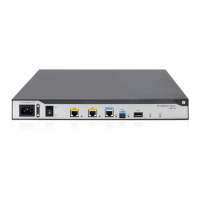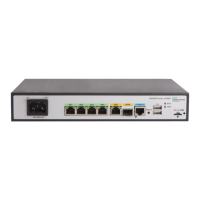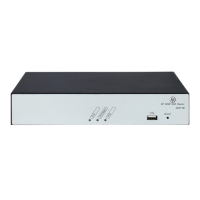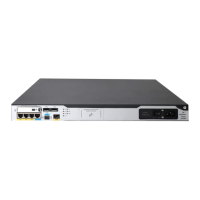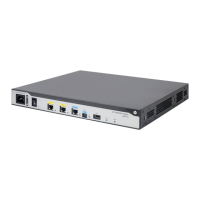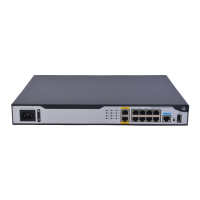19
Ste
Command
Remarks
1. Enter system view.
system-view N/A
2. Enter interface view.
interface interface-type interface-number
N/A
3. Enable PPP LQM.
ppp lqm close-percentage
close-percentage [ resume-percentage
resume-percentage ]
By default, PPP LQM is
disabled.
4. Configure the interface to
periodically send LCP echo
packets when LQM detects a
low quality link.
ppp lqm lcp-echo [ packet size ]
[ interval seconds ]
By default, the interface does
not send LCP echo packets
when LQM detects a low
quality link.
Enabling PPP accounting
PPP accounting collects PPP statistics, including the numbers of received and sent PPP packets and bytes.
AAA can use the PPP statistics for accounting. For more information about AAA, see Security
Configuration Guide.
To enable PPP accounting:
Ste
Command
Remarks
1. Enter system view.
system-view N/A
2. Enter interface view.
interface interface-type
interface-number
N/A
3. Enable PPP accounting.
ppp account-statistics enable [ acl
{ acl-number | name acl-name } ]
By default, PPP accounting is
disabled.
Configuring the nas-port-type attribute
The nas-port-type attribute is used for RADIUS authentication and accounting. For information about the
nas-port-type attribute, see RFC 2865.
To configure the nas-port-type attribute:
Ste
Command
Remarks
1. Enter system view.
system-view N/A
2. Enter VT interface view.
interface virtual-template number N/A
3. Configure the nas-port-type
attribute.
nas-port-type { 802.11 | adsl-cap
| adsl-dmt | async | cable |
ethernet | g.3-fax | hdlc | idsl |
isdn-async-v110 |
isdn-async-v120 | isdn-sync |
piafs | sdsl | sync | virtual |
wireless-other | x.25 | x.75 |
xdsl }
By default, the nas-port-type
attribute is determined by the
service type and link type of the
PPP user (see Table 1
).
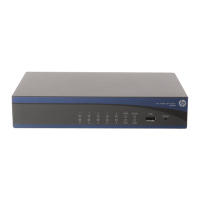
